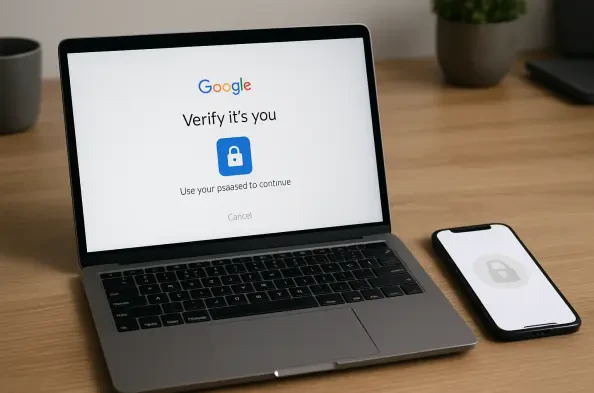Imagine a world where the frustration of forgotten passwords and the anxiety of phishing scams are relics of the past, replaced by a seamless and secure login experience that prioritizes user convenience without compromising safety. In 2025, this vision is inching closer to reality with Google’s ambitious integration of passkey technology. As cyber threats continue to evolve, with millions of credentials compromised annually, the need for robust authentication methods has never been more pressing. This review delves into Google’s implementation of passkeys, exploring its features, real-world performance, and the broader implications for digital security. The analysis aims to uncover whether this technology truly heralds a passwordless era or if significant hurdles remain.
Understanding Passkeys and Google’s Strategic Vision
Passkeys represent a transformative approach to authentication, designed to replace traditional passwords with a method that is both more secure and easier to use. Unlike passwords, which rely on memorized strings vulnerable to theft or guessing, passkeys leverage cryptographic techniques to verify identity without requiring users to recall complex combinations. This shift addresses a long-standing pain point in digital security, offering a streamlined alternative that minimizes human error.
At the core of passkey technology lies asymmetric encryption, where a public-private key pair ensures that sensitive data remains protected. The private key stays securely on the user’s device, while the public key is shared with services for verification, creating a robust barrier against unauthorized access. This device-bound security model fundamentally reduces risks associated with server-side breaches, positioning passkeys as a formidable defense mechanism.
Google’s commitment to a passwordless future is evident through its integration of passkeys with Google Password Manager, a tool that simplifies credential management across platforms. By embedding passkeys into its ecosystem, Google aims to enhance cybersecurity for millions of users, aligning with industry-wide efforts to combat escalating threats. This strategic push not only elevates user experience but also sets a benchmark for other tech giants to follow in fortifying digital interactions.
Key Features of Google’s Passkey System
Passkey Setup and Oversight
Setting up a passkey for a Google account is a straightforward process, accessible via designated portals such as the official passkey management page and personal account security settings. Users can initiate creation by logging into their account and following guided prompts to generate a passkey, which can be device-specific or managed through third-party tools. This flexibility ensures that individuals can tailor the setup to their preferred security framework.
Compatibility is a critical consideration, with support spanning multiple operating systems including Windows 10, macOS Ventura, Android 9, and iOS 16, alongside browsers like Chrome 109, Safari 16, Edge 109, and Firefox 122. Such broad coverage allows a diverse user base to adopt passkeys without needing specialized hardware or software. However, ensuring the device and browser meet these requirements is essential for a seamless experience.
The ability to create multiple passkeys for different devices adds a layer of convenience, particularly for those managing access across various gadgets. Local storage on devices, coupled with syncing capabilities, ensures that passkeys remain accessible while maintaining security. This feature underscores Google’s focus on balancing usability with robust protection, though it also introduces considerations for device management.
Security Protocols and Encryption Standards
Passkeys offer a significant security upgrade over traditional passwords by employing asymmetric encryption, which utilizes a public-private key pair for authentication. The private key, confined to the user’s device, is never transmitted, drastically reducing the risk of interception during phishing attempts or data breaches. This inherent design makes passkeys a formidable shield against common cyber threats.
In contrast to passwords, which often rely on symmetric encryption and server-side storage, passkeys eliminate the need for centralized credential databases that can be targeted by attackers. Since no shared secret exists between user and service, the likelihood of unauthorized access diminishes, even if a malicious actor gains access to public-facing data. This paradigm shift redefines how security is approached in digital ecosystems.
Storing passkeys in Google Password Manager adds convenience but also raises questions about vulnerabilities, particularly on shared or stolen devices. While local encryption safeguards data, the potential for physical access to a device remains a concern. Users must weigh these risks against the benefits of centralized management, considering additional protective measures for high-risk scenarios.
Recent Milestones in Passkey Adoption
Google has made notable strides in automating passkey integration, with features that prompt users to save passkeys during login processes or upgrade existing accounts seamlessly. These efforts aim to reduce friction in adopting the technology, ensuring that even less tech-savvy individuals can transition to this secure method. Automation marks a pivotal step in mainstreaming passkeys across diverse user demographics.
The ecosystem of passkey-compatible websites is expanding, with major retailers like Best Buy embracing the technology alongside numerous other services listed in comprehensive online directories. This growing support reflects broader industry acceptance, encouraging users to explore passkey-enabled logins for everyday activities. As adoption scales, the visibility of compatible platforms continues to improve.
Collaboration and competition among tech leaders such as Apple, Microsoft, and Google shape the passkey landscape, with each company carving out its ecosystem while occasionally imposing restrictions on interoperability. This dynamic fosters innovation but also creates fragmentation, challenging the goal of a unified standard. Navigating these industry trends will be crucial for achieving widespread, cohesive adoption over the coming years.
Practical Applications and User Scenarios
In practical settings, passkeys integrated with Google Password Manager simplify authentication for supported websites, enhancing security for Google accounts and beyond. Users can log into platforms with a single verification step, bypassing the need to enter credentials manually. This efficiency transforms routine digital interactions into smoother, safer experiences.
A specific example involves creating passkeys for retail accounts like Best Buy, where users initiate the process through the site’s security settings after saving login details in Google Password Manager. Following prompts to verify identity, often via a secondary device or PIN, a passkey is generated and stored for future use. This step-by-step integration highlights the technology’s potential to streamline access across varied services.
The convenience of passkeys shines on Android devices and Chrome browsers, where cross-device compatibility reduces authentication barriers. For users juggling multiple gadgets, this feature eliminates repetitive login hurdles, fostering a fluid workflow. As passkeys become integral to daily digital tasks, their role in simplifying security without sacrificing protection becomes increasingly apparent.
Obstacles and Drawbacks of Google’s Passkey Implementation
Managing passkeys exclusively through Google’s ecosystem presents challenges, particularly in achieving seamless cross-platform syncing compared to third-party password managers. Limitations in interoperability can frustrate users accustomed to fluid credential sharing across diverse environments. This constraint underscores a gap in delivering a fully unified experience.
Recovery poses another hurdle, as device-bound passkeys become inaccessible if the associated gadget is lost or stolen, necessitating fallback options like recovery codes or traditional passwords. While Google syncs passkeys across linked devices, the process of regenerating or removing keys can be cumbersome. Such scenarios highlight the need for robust contingency mechanisms.
Security risks tied to local storage also warrant attention, as vulnerabilities on compromised devices could expose passkeys despite encryption safeguards. Additionally, inconsistent support across services and platforms creates uneven adoption, limiting the technology’s reach. Addressing these gaps will be essential to bolster user confidence and ensure passkeys fulfill their protective promise.
Future Outlook for Passkey Technology
Google’s leadership in driving passkey adoption positions it as a catalyst for broader industry collaboration, potentially standardizing the technology across sectors. By championing open frameworks and partnerships, the company can pave the way for universal compatibility, dismantling existing silos. This trajectory promises a more cohesive digital security landscape.
Anticipated enhancements, such as improved cross-device syncing and deeper integration with third-party services, could address current usability shortcomings. These advancements would streamline passkey management, making the technology more intuitive for a wider audience. Continuous refinement will be key to sustaining momentum in user adoption.
Looking ahead, passkeys hold the potential to redefine digital authentication, fostering a passwordless environment that reshapes user behavior and cybersecurity norms. As reliance on traditional credentials wanes, the emphasis on education and accessible tools will grow, ensuring individuals adapt to this paradigm. The long-term impact hinges on balancing innovation with user-centric design.
Final Thoughts and Recommendations
Reflecting on Google’s passkey integration, the initiative stands out for its enhanced security through asymmetric encryption and user-friendly design that streamlines logins. The convenience it offers across supported platforms, paired with industry momentum, marks a significant leap in authentication practices. However, limitations in cross-platform syncing and recovery processes reveal areas needing refinement.
Moving forward, users are encouraged to explore third-party password managers for greater flexibility in managing passkeys across diverse ecosystems. Prioritizing device security becomes a critical step to mitigate risks associated with local storage vulnerabilities. Additionally, staying informed about expanding passkey support among services ensures users maximize the technology’s benefits.
As the digital landscape evolves, Google’s role in championing a passwordless framework demands ongoing collaboration with industry peers to standardize protocols. Advocating for user education emerges as a vital component, empowering individuals to navigate this transition confidently. These actionable measures promise to solidify passkeys as a cornerstone of future cybersecurity strategies.






